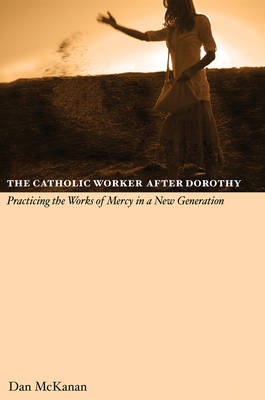
- Afhalen na 1 uur in een winkel met voorraad
- Gratis thuislevering in België vanaf € 30
- Ruim aanbod met 7 miljoen producten
- Afhalen na 1 uur in een winkel met voorraad
- Gratis thuislevering in België vanaf € 30
- Ruim aanbod met 7 miljoen producten
Zoeken
The Catholic Work After Dorothy
Practicing the Works of Mercy in a New Generation
Dan McKanan
Paperback | Engels
€ 44,45
+ 88 punten
Omschrijving
When Dorothy Day died in 1980, many people assumed that the movement she had founded would gradually fade away. But the current state of the Catholic Worker movement--more than two hundred active communities--reflects Day's fierce attention to the present moment and the local community. These communities have prospered, according to Dan McKanan, because Day and Maurin provided them with a blueprint that emphasized creativity more than rigid adherence to a single model. Day wanted Catholic Worker communities to be free to shape their identities around the local needs and distinct vocations of their members. Open to single people and families, in urban and rural areas, the Catholic Worker and its core mission have proven to be both resilient and flexible. The Catholic Worker after Dorothy explores the reality of Catholic Worker communities today. What holds them together? How have they developed to incorporate families? How do Catholic Workers relate to the institutional church and to other radical communities? What impact does the movement have on the world today?
Specificaties
Betrokkenen
- Auteur(s):
- Uitgeverij:
Inhoud
- Aantal bladzijden:
- 240
- Taal:
- Engels
Eigenschappen
- Productcode (EAN):
- 9780814631874
- Verschijningsdatum:
- 1/03/2008
- Uitvoering:
- Paperback
- Formaat:
- Trade paperback (VS)
- Afmetingen:
- 139 mm x 207 mm
- Gewicht:
- 272 g

Alleen bij Standaard Boekhandel
+ 88 punten op je klantenkaart van Standaard Boekhandel
Beoordelingen
We publiceren alleen reviews die voldoen aan de voorwaarden voor reviews. Bekijk onze voorwaarden voor reviews.











